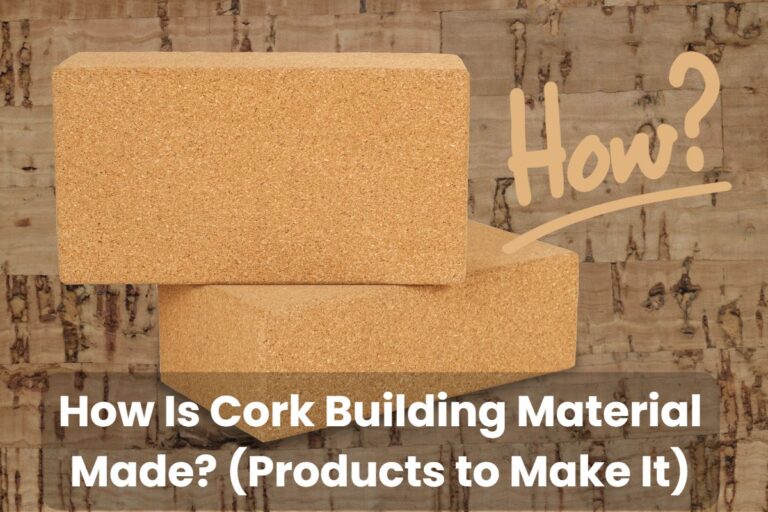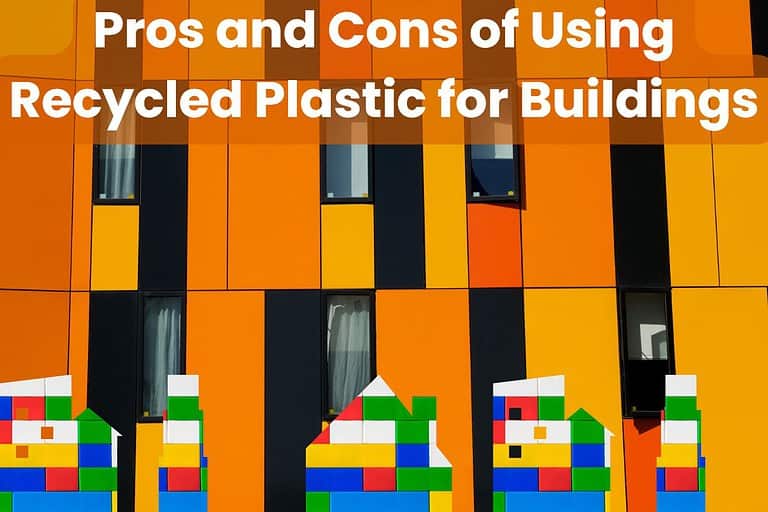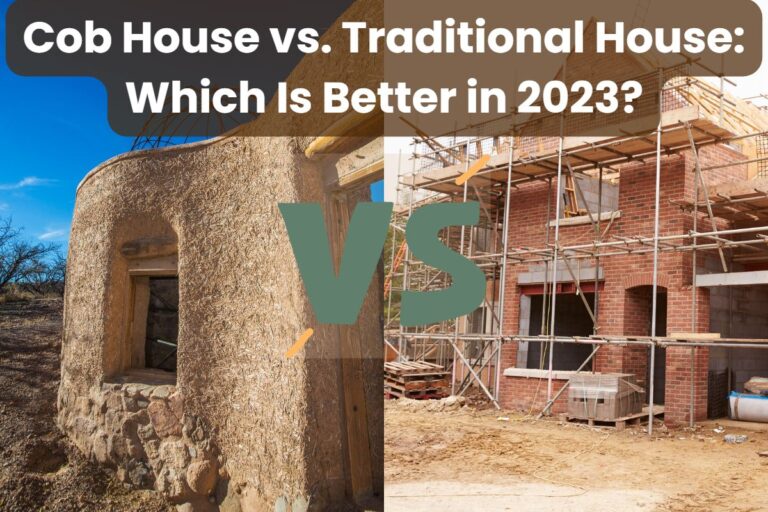Recycled Steel Beams – What to Know Before You Buy Them

Steel beams play a crucial role in a building — they support its roof, upper floors, and load-bearing walls, distributing these loads evenly across the building’s foundation.
Steel is a common material for making beams, and recycled steel beams are becoming popular due to their green building credentials. While you may want to shift toward recycled steel beams for their eco-friendliness, there are crucial things you must know before making the leap.
Recycled steel is a more sustainable building material than virgin steel and conserves energy and natural resources. It eliminates about 1.67 tonnes of carbon dioxide emissions from manufacturing a tonne of virgin steel. While these stats might encourage you to use recycled steel products like beams, you should know their pros and cons before going down that path.
In this article, I’ll discuss the differences between used and second-hand steel. I’ll also share buying tips for recycled steel and how to reuse steel beams safely. Keep reading!
The Difference Between Used and Second-Hand Steel

“Used” and “Second-hand” are descriptions that are often used interchangeably. However, they refer to different things in the context of steel. Let’s discuss the differences to ensure you get suitable material for your project.
What Is Used Steel?
Used steel is steel previously used in a project, like construction or manufacturing. It might have been part of machinery, a building, or other steel-based projects that have served their original purpose and are still usable.
Used steel may or may not have undergone reprocessing or refurbishment before being offered for reuse. Structural steel, like beams, is ideal for direct reuse without being recycled (remelted).
What Is Second-Hand Steel?
Second-hand steel encompasses a broader range of conditions. First, it may refer to steel previously used for its original purpose, just like used steel. Second, it refers to steel that was never used or is surplus from a previous project.
Second-hand steel may refer to steel that was never used due to being part of excess inventory. This type of second-hand steel is usually in relatively better condition for reuse.
Simply put, second-hand steel means previously owned but not necessarily used.
Tips for Buying Recycled Steel

Recycled steel is more eco-friendly than virgin steel, and it’s important to know how to buy high-quality steel with minimal environmental impact.
If you’re new to the recycled steel market the following tips for buying recycled steel products like beams will help you in the following ways:
- Avoiding scams and substandard products.
- Getting the best quality steel beams for your project.
- Getting a fair deal on the price of recycled steel products.
The tips that follow will help you buy recycled steel products with confidence.
Research to Find Reputable Suppliers
As with other industries, not all recycled steel suppliers offer the same quality of stock. Some may offer substandard recycled steel products that don’t meet sustainable construction criteria.
To increase your chances of getting the best products, you must research the market to find suppliers with a good reputation for selling quality recycled steel products.
Some tips to help with the research include:
- Check customer reviews online.
- Review the supplier’s certifications like LEED v4 for environmental consciousness.
- Talk to the supplier’s existing customers.
- Ask industry experts and peers for their recommendations.
Another good resource to look at is the company’s website to ensure they uphold environmentally friendly practices in their recycling.
Specify Your Requirements
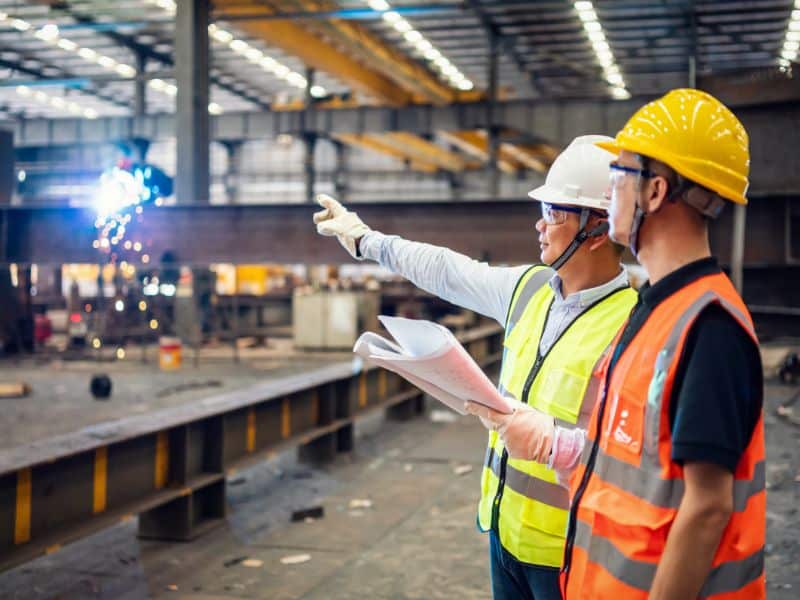
You must specify your requirements clearly to the supplier.
Ensure the supplier knows the exact product you need for your project. This will help narrow things down to get you the quality products you need.
Be clear about the following specifics.
- The purpose of the product.
- Dimensions.
- Quality requirements like corrosion resistance levels.
- Load bearing capacity.
Check the Product’s Specifications
Once you take delivery of the product, check its specifications before closing the deal.
This will avoid buying substandard products that don’t meet your preferred quality.
The specifications to look for include the following:
- The product’s dimensions and weight as specified in your requirements.
- Load bearing capacity to ensure it can sustain your project’s load requirements.
- Its grade, which tells you its corrosion resistance.
- The product’s surface condition to ensure there are no dents, rust, or any other defects.
Consider the Product’s Environmental Impact
ISO certification is essential when buying recycled steel products like beams. It ensures the product meets sustainable building criteria and has minimal environmental impact.
ISO 14001:2015 is the most relevant certification for recycled steel products. It sets out the requirements for environmental management to be adopted by organizations. So, recycled steel providers with this certification have demonstrated their adherence to these standards.
Negotiate for a Fair Price
Negotiate with the supplier for the best price for your recycled steel product.
Ask for discounts if buying in bulk — this tactic will help you save money. It’s also important to compare prices from different suppliers before closing the deal.
Reusing Steel Beams
Besides buying recycled steel, you might want to reuse steel beams from an existing structure.
Reusing steel beams is an eco-friendly and cost-saving approach that diverts waste from landfills.
Here are some essential tips for reusing steel beams:
Inspect the Condition of the Steel Beam
Not all steel beams from demolished buildings are suitable for reuse. Therefore, you must inspect the condition of each beam before reusing it.
A visual inspection can help you determine the suitability of a steel beam for reuse. Look for signs of corrosion, rusting, cracks, and dents.
Dents and cracks interfere with the material’s structural integrity and can make it unsuitable for reuse.
Moreover, you should inspect the welds and ensure they’re sound.
Verify Its Dimensional Properties
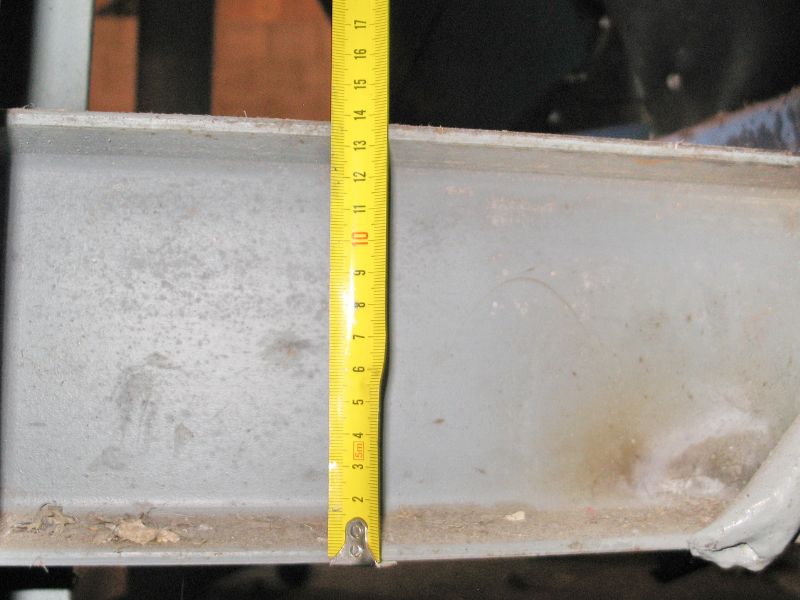
Dimensional properties are crucial when reusing steel beams. After all, the beam has to be the right size for its intended use, or it won’t fit.
Verifying these dimensions lets you know if the steel beam fits into the new structure. They include:
- Depth
- Width
- Shape
- Area
The table below summarizes a few steel beam dimensional properties according to the American Institute of Steel Construction:
| Shape | Area (in2) | Depth (in) | Width (in) | Section Properties | |||
| Ix (in4) | Iy (in4) | Plastic Mod Xp (in3) | Plastic Mod Yp (in3) | ||||
| W4x13 Dimensions | 3.83 | 4.16 | 4.06 | 11.3 | 3.86 | 6.28 | 2.92 |
| W5x16 Dimensions | 4.71 | 5.01 | 5 | 21.4 | 7.51 | 9.63 | 4.58 |
| W5x19 Dimensions | 5.56 | 5.15 | 5.03 | 26.3 | 9.13 | 11.6 | 5.53 |
Table 1: Beam sizes table for the AISC steel library. Source: Beam Dimensions.
Remove Contaminants
After inspecting and verifying the steel beam’s dimensional properties, the next step is to remove contaminants.
Contaminants are materials that limit a steel beam’s performance and aesthetics, and removing them helps maintain the material’s structural integrity.
Examples of contaminants include dirt, dust, and paint chips from the demolition site.
The best way to remove contaminants is by shotting or sand-blasting them. Although this process is tedious and time-consuming, it’s worth it to get the beams cleaned up ready for reuse.
Prime the Steel Beams
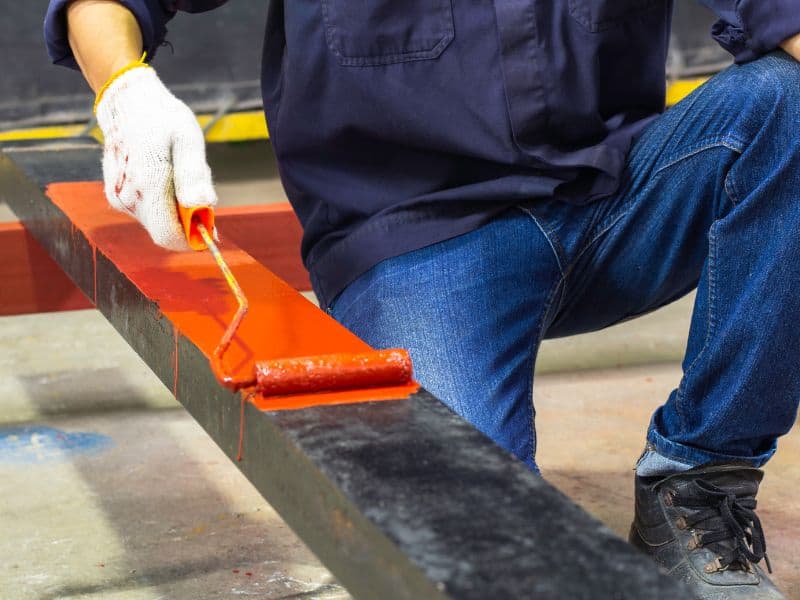
Priming entails applying a protective coating to the steel beam’s surface.
The coating protects the steel from corrosion and weathering.
Consider the following features when selecting a primer:
- Its ability to protect the beam from rusting.
- Its adherence and durability.
- Environmental effect (It must be VOC-free).
- Its compatibility with the steel beam’s surface.
Pros and Cons of Recycled/Second-Hand Steel
Pros
- It conserves between 60 and 74% of the energy used to produce primary steel.
- It minimizes greenhouse gas emissions.
- It conserves natural resources like iron ore, coal, and limestone.
- It prevents landscape degradation and pollution of the air and water environments through opencast mining.
Cons
- Insufficient steel scrap for recycling can make recycled steel costly.
- Potential contamination with paints and coatings.
- Collection and sorting challenges due to insufficient collection systems in some countries.
- Difficulties in traceability due to the lack of a universal marking system.
Final Thoughts On Recycled Steel Beams
Remember these important tips when procuring recycled steel beams for your next project.
Whether you’re buying or reusing, these tips will help you identify quality steel beams in line with your requirements.
They’ll also help you reduce your project’s environmental impact by following sustainable building practices.



